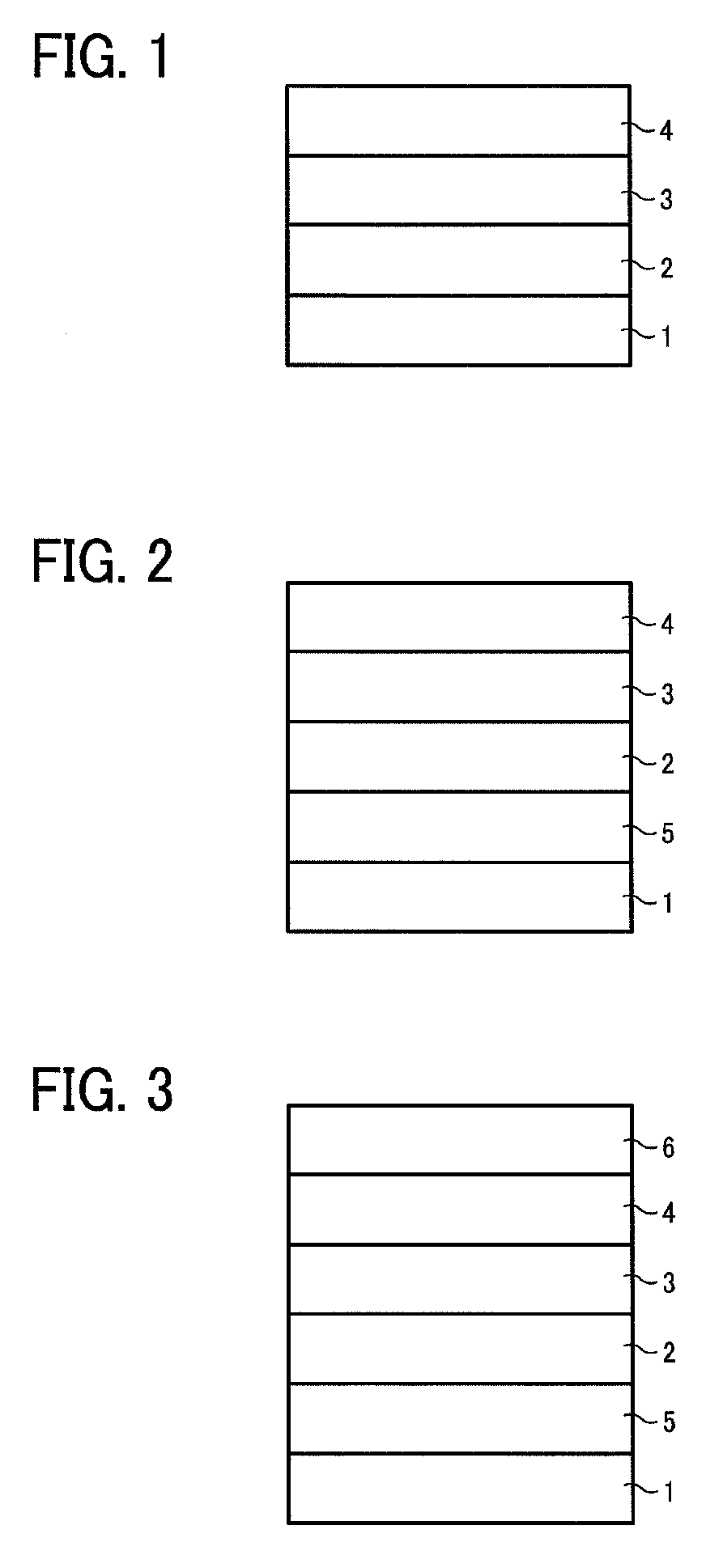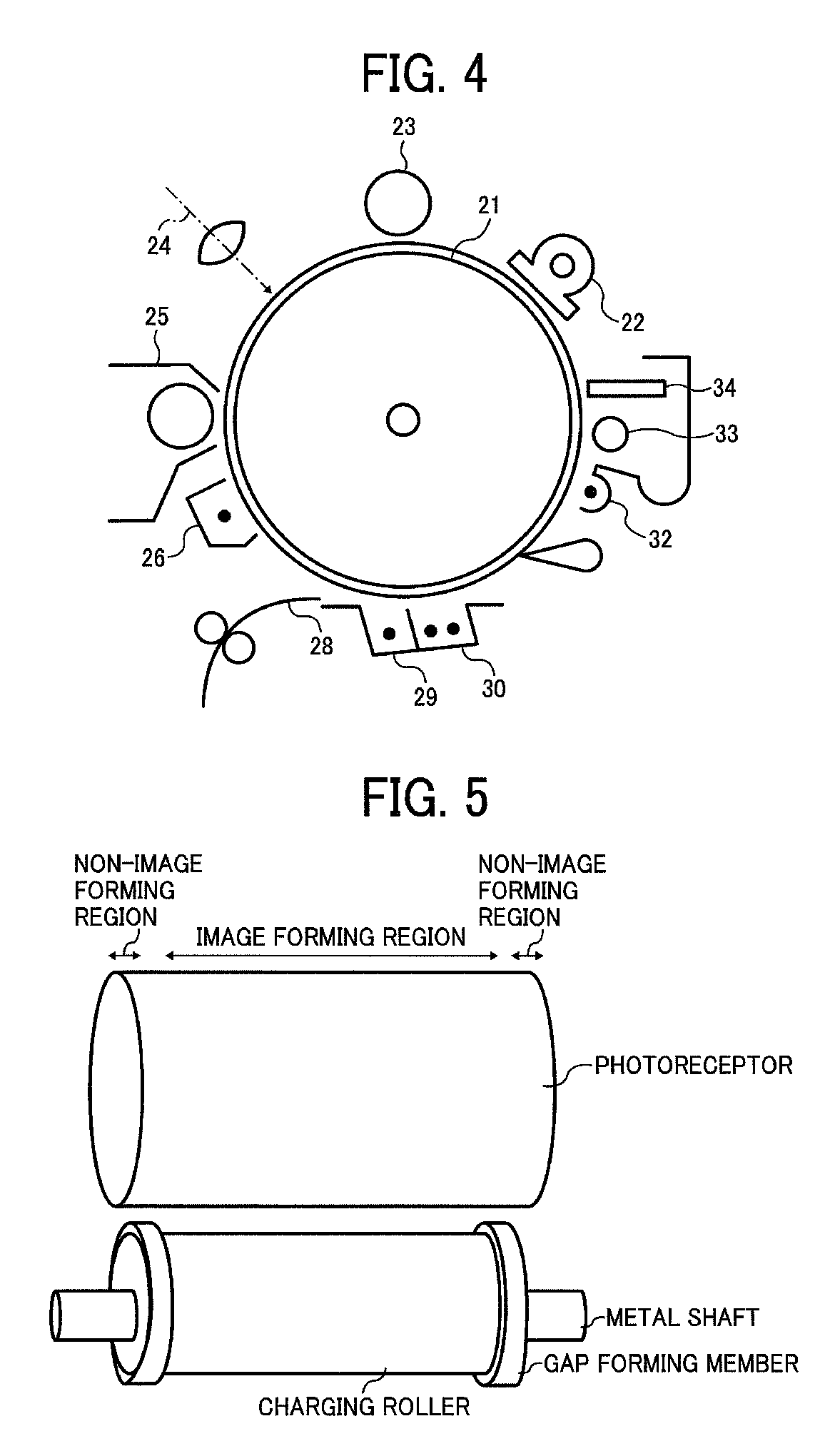Electrophotographic photoreceptor, image forming apparatus using the electrophotographic photoreceptor, and method of producing electrophotographic photoreceptor
a photoreceptor and photoreceptor technology, applied in the field of electrophotographic photoreceptors, can solve the problems of limited ratio to binder resins, frequent replacement, and insufficient sensitivity of charge generation materials, and achieve the effects of high sensitivity, small diameter, and charge stability
- Summary
- Abstract
- Description
- Claims
- Application Information
AI Technical Summary
Benefits of technology
Problems solved by technology
Method used
Image
Examples
synthesis example 1
of Titanyl Phthalocyanine Pigment
[0270]A titanyl phthalocyanine pigment is prepared according to Example 1 of JP-A 2004-83859, the contents of which are herein incorporated by reference. Specifically, 292 parts of 1,3-diimonoisoindoline and 1,800 parts of sulfolane are mixed and 204 parts of titanium tetrabutoxide are added thereto under nitrogen gas flow. The mixture is heated to 180° C. and subjected to reaction for 5 hours at from 170 to 180° C. while being agitated. After the termination of the reaction, the mixture stands to cool. The deposited products are washed with chloroform until expressing blue color. The deposited products are further washed with methanol for several times and with hot water of 80° C. for several times, followed by drying. Thus, a crude titanyl phthalocyanine pigment is prepared.
[0271]Next, 60 parts of the crude titanyl phthalocyanine pigment is dissolved in 1,000 parts of a 96% sulfuric acid at from 3 to 5° C. under agitation, followed by filtration. T...
PUM
 Login to View More
Login to View More Abstract
Description
Claims
Application Information
 Login to View More
Login to View More - R&D
- Intellectual Property
- Life Sciences
- Materials
- Tech Scout
- Unparalleled Data Quality
- Higher Quality Content
- 60% Fewer Hallucinations
Browse by: Latest US Patents, China's latest patents, Technical Efficacy Thesaurus, Application Domain, Technology Topic, Popular Technical Reports.
© 2025 PatSnap. All rights reserved.Legal|Privacy policy|Modern Slavery Act Transparency Statement|Sitemap|About US| Contact US: help@patsnap.com



